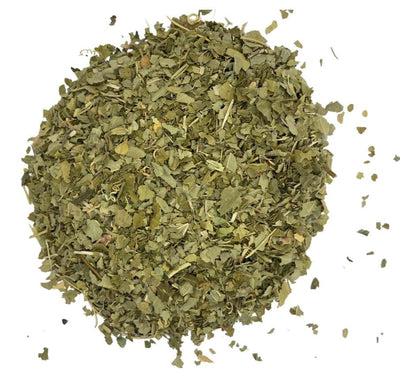Japanese Tea Ceremony
The Japanese green tea ceremony is a Zen Buddhist ritual developed from the Chinese Tea Ceremony. Cha-no-yu, also known as the "Way of Tea," is a traditional Japanese cultural activity that has been passed down for centuries. The way of performing the ceremony is called 'otemae'. It is a ceremonial ritual that involves the preparation and presentation of matcha, a type of powdered green tea, in a peaceful and harmonious setting. The tea ceremony is not just about drinking tea but is a form of art that encompasses various elements such as hospitality, aesthetics, and spiritual harmony. The idea of the ceremony is to turn one’s back on the material world and find a spiritual harmony with the wider universe.

Tea Master by Adachi Ginko, 1885
The Connection Between the Tea Ceremony and Zen Buddhism
The Japanese tea ceremony, renowned as a classical art of refinement alongside kodo and kado, holds deep roots in Zen Buddhism. This connection can be traced back centuries to the year 815, when the monk Eichu brought the tradition of tea from China to Japan.
Upon Eichu's return, he introduced sencha to Emperor Saga. The emperor was so captivated by the experience that he decreed the establishment of tea plantations in Japan's Kinki region. Initially embraced by the nobility, tea's popularity gradually expanded, particularly flourishing by the 12th century.
Zen Buddhism greatly influenced the tea ceremony's development, infusing it with principles of mindfulness, simplicity, and discipline. The practice emphasizes the importance of being present in the moment and appreciating the beauty in simplicity—core tenets of Zen philosophy.
History of the Japanese Tea Ceremony
The origin of the Japanese tea ceremony can be traced back to the 9th century, when tea was introduced to Japan from China. During the Kamakura period (1185-1333), tea was mainly consumed as a medicinal drink, but by the Muromachi period (1336-1573), it had become a popular beverage among the Japanese nobility. During this time, tea drinking became a social activity, and tea houses were built to provide a space for people to gather and enjoy tea. The Japanese participants would exhibit their beautiful tea bowls and share their knowledge about tea.
The tea ceremony as it is known today was formalised in the 16th century by Sen no Rikyu, who is considered to be the founder of the Japanese tea ceremony. Rikyu combined the original elements of the tea ceremony and created a new, more sophisticated form of tea drinking that was based on the principles of simplicity, tranquillity, and harmony. His minimalistic approach ensured a more spiritual experience than the tea ceremonies of the Muromachi period. It is Senno Rikyu's approach that is taught in tea ceremony schools today.
In Japan, tea ceremonies are a cherished tradition with different variations to suit various occasions.
Chakai is one type, characterized by its informal nature. These gatherings focus on appreciating the art of serving tea in a relaxed setting.
On the other hand, a Chaji offers a more formal experience. This type of ceremony is elaborate and can last several hours, often including a full-course meal, followed by a sequence of teas.
There’s also an alternative version called Senchado, which is less common. Unlike the other ceremonies, Senchado uses tea leaves instead of powdered tea, offering a unique twist on the traditional tea ceremony experience.
These various types of Japanese tea ceremonies provide participants with different ways to enjoy and honour the rich cultural significance of tea in Japan.
Understanding the Different Schools of Tea Ceremony
The tea ceremony, a quintessential part of Japanese culture, boasts several schools, each with its unique philosophies and practices. Discovering these schools unveils a fascinating world of ritual and tradition.
1. Urasenke School
- Philosophy: Known for its philosophy of inclusion and accessibility, the Urasenke School aims to share the principles of the tea ceremony with a wide audience.
- Practices: Emphasizes a relaxed posture and natural movements, allowing participants to engage comfortably and authentically.
2. Omotesenke School
- Philosophy: With a focus on simplicity and natural beauty, Omotesenke champions rustic aesthetic values.
- Practices: Characterized by the use of unglazed tea bowls and less formal styles, it highlights humility and subtle elegance.
3. Mushanokōji-senke School
- Philosophy: This school embodies a unique blend of simplicity and refinement, often integrating elements that reflect personal creativity.
- Practices: Known for its personalized approach, it allows masters to adapt ceremonies to reflect individual tastes and contemporary influences.
Differences in Styles and Techniques
Each school maintains distinct styles, techniques, and rituals. These differences manifest in:
-
Tea Utensils: From the choice of tea bowls to the design of tea scoops, the aesthetics and materials vary widely.
-
Preparation Methods: Each school has its own approach to whisking matcha, inflowing water, and arranging tea tools.
-
Ceremonial Settings: While some schools favour a more elaborate setup, others prefer minimalistic designs that emphasize spiritual connections.
Understanding these schools involves more than just recognizing style differences; it’s about embracing the rich tapestry of cultural expressions they offer. Exploring the tea ceremony through these diverse lenses provides a deeper appreciation for this revered tradition.
The Japanese Tea Ceremony Experience
The Tea House Garden (Roji meaning dewy ground)
Before entering the tea house, guests pass through an architecturally designed, natural garden. The style is simplistic and minimalistic with the absence of showy flowers or plants with strong aromas. The majority of the garden is planted with evergreen plants ensure a consistent appearance, with a scattering of seasonal plants throughout. Rocky gardens, stone sculptures and lanterns completing the spiritual aesthetic.
A stone path leads its way to the tea house, ending at a stone basin where guests must wash their hands and mouth in a symbolic gesture of physical cleansing, Guests must then remove their shoes before entering the tea house and traditionally the samurai warriors would have been required to leave their swords at the door.

The Tea House - chashitsu
The Japanese Green Tea ceremony takes place traditionally in a small tea house called a chashitsu which resembles a mountain hut. The small hut has a low ceiling, an alcove with scrolls, sliding doors and silky tatami mats cover the floor. The doorways as often kept low so guests need to bend over to enter, symbolising humility. The decorations are simple and include the shoji (windows made of translucent paper), scrolls and simple flower arrangement. Every movement, each piece of equipment, the choice of the wall hanging, and the simple flower arrangement are decided according to a strict set of rules which tea masters spend years perfecting.

A modern Japanese tea room
Tea Ceremony Procedure
The host welcomes their guest into the tea hut, and they all sit in a circular or semi-circular fashion. Greetings are exchanged and the ceremony can then begin.
- The host starts by filling a kettle with water and heating it on a charcoal fire.
- While the water is heating, the host prepares the tea utensils, such as the tea bowl, tea scoop, tea whisk, and tea cloth.
- The host then adds matcha powder to a bowl with hot water uses the tea whisk to mix the tea and water until it is frothy. The first round of tea is called kukicha, a 'thick' tea made from the highest quality tea leaves. This Matcha has been grown in the shade for at least 3 weeks before harvesting which produces a tea with higher caffeine content. This bowl is often shared amongst all the guests.
- The host then presents the tea to the guests, who receive it with both hands and take a sip.
- Later, each guest is served his or her own bowl of ‘thin’ tea called ‘usucha’ which is made with a smaller measure of the matcha tea.
- The ceremony can last up to four hours and at the end, guests feel very calm and spiritually uplifted.
The Japanese tea ceremony has not changed much since it was first introduced to Japan.
"Today Kyoto and Uji are among the best destinations in the country to enjoy Japan's tea culture. These cities offer a diverse array of venues where one can immerse themselves in the traditional art of the tea ceremony. From serene temples and meticulously maintained Japanese gardens to cultural facilities and luxurious hotels, there are numerous places to experience this timeless tradition.
In Kyoto, often regarded as the heart of Japan's traditional culture, visitors can find both full-length, formal tea ceremonies and shorter, more accessible versions tailored for international guests. This flexibility ensures that everyone can partake in this cultural experience, no matter their schedule.
Whether you're seeking a tranquil, reflective ceremony in a historical setting or a more contemporary approach in a modern venue, Kyoto and Uji provide the perfect backdrop for exploring Japan's rich tea heritage."

Equipment Used in the Tea Ceremony
-The tea bowl (chawan) is chosen carefully to match the season and the occasion. The tea bowl is often hand-crafted and decorated with intricate patterns and designs, and it is meant to be appreciated both aesthetically and spiritually.
-The tea scoop (chashaku) is used to measure out the matcha powder, and it is typically made from bamboo or other natural materials. The tea scoop is often decorated with intricate designs and patterns, and it is meant to be appreciated both aesthetically and spiritually.
-The tea cloth (fukusa) is used to wipe the tea bowl after each guest has finished drinking, and it is typically made from silk or other fine materials. The tea cloth is often decorated with intricate designs and patterns, and it is meant to be appreciated both aesthetically and spiritually.
- The bamboo whisk (chasen) is used to mix the hot water and matcha powder together. It breaks up any lumps and leave the matcha with a foamy texture.
Absolutely, there are numerous opportunities to immerse oneself in the Japanese tea ceremony. Across the nation, various tea schools offer courses dedicated to this rich cultural practice. These classes delve into both tea appreciation and the meticulous steps involved in performing the ceremony.
Popular with many young women, these courses emphasize the importance of grace and proper etiquette. It's a widely respected tradition that signifies a deep cultural respect.
Achieving proficiency in the art of the tea ceremony is no quick task. Many individuals, including experienced practitioners, often spend years honing their skills. Even those who've dedicated substantial time to mastering the ceremony often consider themselves lifelong learners, continually exploring its nuanced intricacies.
So, if you’re eager to embark on this journey, you’ll find that there’s plenty of guidance and learning available to help you along the way.

Purpose
The tea ceremony is not just about drinking tea, but it is also about the way in which the tea is prepared and presented. It is a ritual that is performed with great care and attention to detail, and the tea is presented in a way that is meant to be appreciated aesthetically. The tea ceremony is also about hospitality and showing respect to the guests.
The host strives to create a peaceful and harmonious atmosphere, and the guests are expected to behave in a quiet and respectful manner. Upon arrival, guests remove their shoes before entering the tea house, signaling their readiness to embrace the tranquility of the ceremony.
Before stepping into the tatami-mat room, guests engage in a ritual purification at a stone basin, washing their hands and rinsing their mouths. This act of cleansing prepares them to fully appreciate the serene experience that awaits.
As they enter, guests should take a moment to admire and comment on the hanging scroll or seasonal flower arrangement, acknowledging the host's meticulous attention to detail.
Seated in the traditional seiza kneeling position, guests observe the tea master as they meticulously clean the utensils. This is a display of precision and dedication, enhancing the ceremony's quiet elegance. The tea is then prepared with equal care, using a kettle over a charcoal fire.
When the tea is served, the first guest receives the bowl with a gesture of respect, raising it slightly before taking a sip. Compliments to the tea master on both the flavour and the presentation of the bowl are customary. The bowl is then passed along, with each guest repeating the respectful ritual.
Through these actions, guests contribute to the ceremony's tranquil and respectful ambiance, aligning perfectly with the host's intent to foster peace and harmony.
Etiquette plays a crucial role throughout this experience. For formal occasions, the tea master will invariably wear a kimono, setting a tone of elegance and tradition. Guests are encouraged to follow suit, dressing appropriately to honour the ceremony's formality. In contrast, for demonstrations aimed at visitors, such formality in attire is not required, showcasing the ceremony's adaptability.
While participating, guests should endeavour to follow the appropriate moves and rituals as a sign of respect. Even though minor faux pas are gracefully overlooked, striving to adhere to tradition reflects one's appreciation for the ceremony's cultural significance. This balance of strictness and leniency in etiquette creates an environment where both host and guest can engage in a shared, meaningful exchange.
Beyond its aesthetic and meditative qualities, the tea ceremony represents a deep cultural tradition. It embodies the Japanese concept of omotenashi, or wholehearted hospitality, where the host meticulously attends to every detail to ensure the guests' comfort and enjoyment. This commitment to etiquette extends to attire; the tea master typically wears a kimono, and guests attending formal occasions are encouraged to do the same.
The ceremony is a dance of precise movements, performed in a strict order that both the host and guests follow, reflecting a shared respect for tradition. Guests are invited to partake in the beauty of the setting and the craftsmanship of the utensils, often while enjoying small sweet cakes. These gestures highlight the cultural appreciation for artistry and attention to detail.
Moreover, the tea ceremony is about spiritual harmony. It is meant to provide a moment of peace and reflection, a way for people to connect with the natural world. It acts as a form of meditation, where participants can achieve a deeper sense of awareness and connection with the world around them. Importantly, the ceremony is forgiving, with minor faux pas overlooked, underscoring a social grace that values understanding and inclusion.
In essence, participating in a tea ceremony is a journey into the heart of Japanese culture, offering a blend of aesthetic appreciation, spiritual reflection, and social interaction.
The traditional Japanese tea ceremony, deeply rooted in culture, has been thoughtfully adapted to accommodate foreign visitors.
- Modified Duration:
- Traditionally, a full tea ceremony can span several hours. To suit the schedules and preferences of international guests, many places offer shorter, condensed versions.
- Cultural Venues:
- In cities like Kyoto, which remains a hub of Japan’s cultural heritage, numerous temples, gardens, and cultural centre's feature tea houses specifically designed for this experience.
- Diverse Settings:
- The ceremony can be enjoyed in various settings like traditional gardens and hotels, allowing guests to choose the ambiance that resonates most with them.
- Educational Elements:
- These adapted sessions often include explanations and demonstrations, helping visitors understand the symbolism and rituals involved, making it not just an experience but also an educational journey into Japanese culture.
By making these adjustments, the tea ceremony becomes accessible and enjoyable for those unfamiliar with its intricacies, offering an enlightening glimpse into Japan’s rich traditions.
In conclusion, the Japanese tea ceremony is a rich and complex cultural tradition that has been passed down for centuries. It is a ritual that involves the preparation and presentation of matcha in a peaceful and harmonious setting, and it is meant to provide a moment of peace and reflection for both the host and the guests. The tea ceremony is a form of art that encompasses various elements such as hospitality, aesthetics, and spiritual harmony, and it is an important part of Japanese culture and history.
Click here to learn about other tea ceremonies from around the world.








